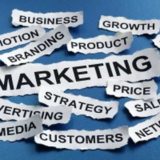Marketing functions – achieve the competitive advantage
Marketing functions can be divided in 5 areas. This are various roles in a marketing team helping the brand to achieve a competitive advantage towards competitors. The functions are summarized as:
- planning
- awareness
- conversion
- retention
- analysis and optimization
Planning
It’s purpose is to set time-bound actions which will allow to achieve marketing objective. At this stage the marketing team works closely with the product and business team to align the goals. Planning provides insight on the direction which has to be taken and adds value to the decision making process by including consumer’s opinions and community perspective. This stage involves also cost planning for the digital strategy, which will achieve the objective, promote the product and retain its adoption. Activities in planning involve principally analysis of business needs, research, defining objectives and goals, set up deadlines and budget.
Awareness
The purpose of this function is to reach to people and increase the number of those ones, who know the brand and offer. The aim of this function is t create relevancy of the offer to the potential customer. It is crucial for the freshly launched products, to associate the name and the brand for future product category references.
Here are defined: market opportunities, development of creative concepts, strategy in medias, content itself, branding and relationships with influencers.
Conversion
The core of the marketing functions, where the individual from the targeted audience is turned into a lead or customer. This function is purely tactical and requires developing offers, communication with customer, testing and adjusting the content, use of paid search, email and re-targeting.
Retention
The purpose of this function is to nurture the customer in view to increase their loyalty. It involves providing extra content, offering promotions and additional experiences. At this stage is crucial to offer an added value to the product or service to encourage the customer to come back. Here the activities are: identification of needs and expectations of the buyer, application of nurturing strategy, providing value added and exceeding expectations, and monitoring the post-sale activity.
Analysis and Optimization
Based on the data and insights, which serve to adjust existing planning and future strategy plans. This function summarizes the success of the strategy. The analyst needs to understand the results and their impact on business objectives. Activities here include collecting the data, analyzing the reason of success (or failure), tweaking or stopping under-performing campaigns, reproducing success and adapting strategy.

